Gadgets – Part II
Part I of this article ended with me bereft of love, a Desktop PC, and still in search of an adequate means of writing on the go.
This was the tail end of 1992 and, although computing technology was advancing like a blitzkrieg across Belgium, if I magically transported you back to that time, you’d find it as primitive as I’d find life in 1940. Computers were big, bulky and expensive, and laptops were regarded as expensive toys, not worthy of serious consideration. It was in this environment that I met SWMNBN (She Who Must Not Be Named) and, early in 1993, moved in with her and her Gateway PC.
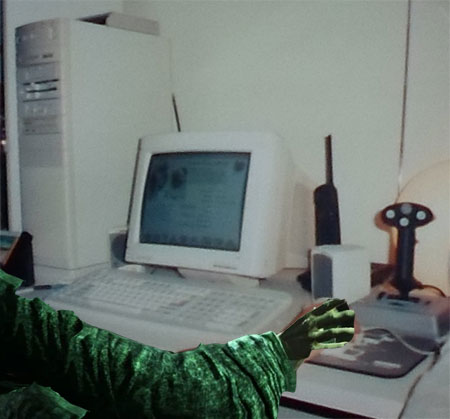
It was not an ideal relationship. We shared the Gateway, with each of us having our own login and personal, secure space. However, it was her PC, and if you peruse the archives of my other blog, you’ll see that my secure space was not actually that secure. Accordingly, as early as 1996, I began experimenting with laptops I borrowed from work. (I was working in the PC Admin Unit by then and had access to better technology.) These early laptops were still not very powerful, but they were good enough for word processing, and they annoyed SWMNBN because she couldn’t get into them to see what I was up to.
Then I stumbled onto something that changed the game: the Brother WP II. It was a laptop-like word processor that was more robust and had far superior battery life. I bought one for $320 in March 1996, and my quest for mobile computing neared its end. I say “neared” because I didn’t find the Brother WP II as satisfactory as I had hoped I would. It was a bit clunky and slow, and the screen text all but disappeared in daylight. I tinkered with it for just over a year, then sold it for $50.
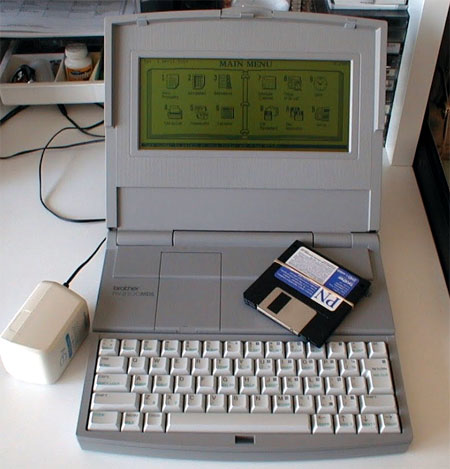
Three years later, I was still desperately seeking sustainable, secure, mobile computing, and coming up empty-handed. I recall buying gadget after gadget, and becoming more and more disappointed until, in desperation, I bought another Brother WP II, hoping the technology had improved. It hadn’t, but I doggedly persevered with it because, at the time, there was nothing better.
But four months later, the Alpha Smart appeared, and I fell hopelessly, deeply in love. I sold the Brother II, bought an Alpha Smart for about $200, and never looked back.
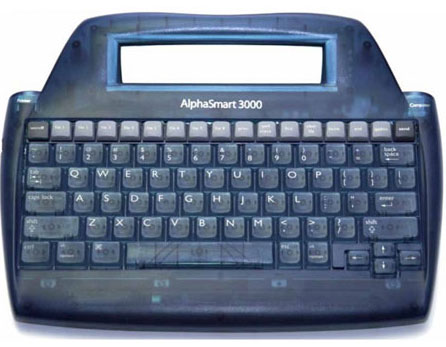
The Alpha Smart was brilliant. Instead of trying to look like a laptop—which is what made the Brother II clunky—or imitate laptop processing—which is what gave it such a short battery life—the Alpha Smart was completely redesigned. It did not pretend to be anything other than a keyboard with a small but adequate screen. You typed, the Alpha Smart saved it instantly and automatically, and the text could be easily transferred to your PC for editing. It was small, light, incredibly robust, and ran for 200 hours on three AA batteries. As soon as I began using it—in June 2000—I knew my quest had finally been realized, though the journey was not yet over.
In December 2000, sensing I would soon be without access to a desktop PC, I bought a Dell computer. It cost me $1,500 and came with the Windows ME (Millennium Edition) Operating System.
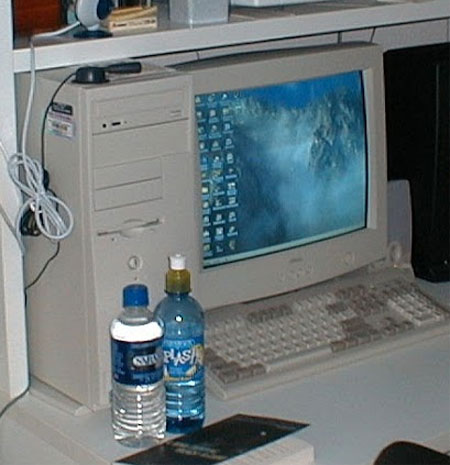
[Quick History Lesson: Windows ME was a stop-gap system developed by Microsoft as a successor to Windows 98. Basically, they needed to upgrade Windows, but didn’t know what to do, so they slapped ME together and released it in September 2000. It was a dog, and became obsolete just over a year later, in October 2001, when Microsoft introduced Windows XP.]
I carried that beast around with me for five years until it finally faded away. Then I bought another Dell (£485) and that lasted five more years. By then, I was living in Britain, where time spent commuting by bus and trains afforded me ample opportunity for mobile computing, for which I continued to use an Alpha Smart.
Despite their reputation for being practically indestructible, I managed to ruin my first Alpha Smart by cleaning the keyboard with WD-40. This was while I was still living in the States. I was, however, expecting to move to Britain soon, so I put off buying another one until July 2002, when we moved into our first flat. I remained content with that until 2005, when I learn the company had brought out something call a Dana.
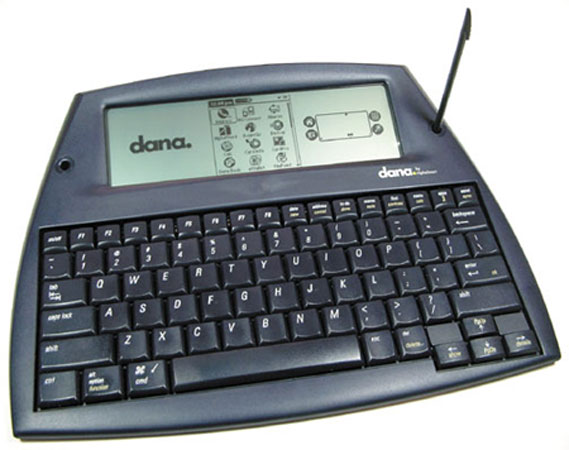
The Dana was an Alpha Smart on Steroids. It had a bigger screen, more storage, and imitated some laptop processing features. As such, it was clunky and buggy and, after numerous conversations with their Help Desk, I traded it for a NEO a year later.
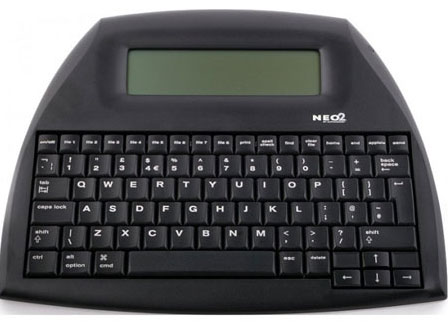
The NEO was brilliant: it was an Alpha Smart, but better, with more font types and sizes (which allowed you to get more text on the screen) and the ability to save an unlimited number of files in its expanded storage space. It was, if anything, more robust than the original Alpha Smart, and still ran for 200 hours on three AA batteries. It remained my go-to device for mobile computing until just about a year ago, surviving attempts to replace it with an Acer Mini-Laptop (twice) and a Nexus 7 tablet. The Acer was compact enough, but the battery life, once again, let me down. The Nexus had the battery life, but was too small and fiddly to write on. I ended up giving them all away and keeping the NEO.
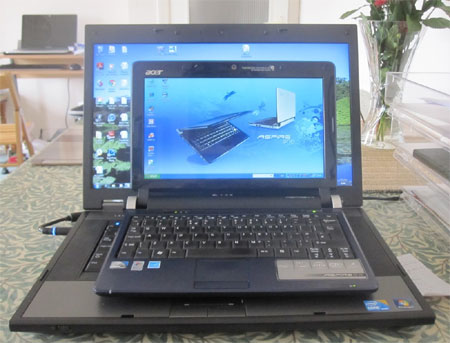
Meanwhile, my Dell gave way to laptops that soon overtook the processing power and storage capacity of desktops, and the footprint of home computing shrank to a pleasingly compact size. I started using my work Laptop—a Dell Lattitude E5510—as my home PC by carrying it in my briefcase (though it was still too big, too clunky, and too power-hungry to use on the bus), then bought a Compaq Presario CQ57 for £400 in 2012 (just in time, too, as I was made redundant not long after and lost access to my work laptop). I switched to HP Computers five years later and, in rapid succession, went through an HP 15A9 (Dec 2017), an HP Pavilion 15cw (Dec 2019 – £609) and an HP Pavilion 14dv (Dec 2021 – £699), where static computing and writing-on-the-go at last intersected.
Several peripheral, though not unrelated, advances enabled this to happen:
First, this newest laptop does not have a Hard Disk Drive (HDD) but a Solid-State Drive (SSD), that runs on—as near as I can tell—magic. It is unbelievingly faster than my old laptop, smaller, and lighter, but with more processing power and a longer battery life. This means I can easily carry it with me in my satchel (it’s not a man’s handbag; it’s a satchel!) and use it wherever I am—café, train, transcontinental jet, holding cell—without worrying, much, about losing power. That said, all of those places—with the exception of the holding cell—now come with power sockets. They also, mostly, come with WiFi, so there is no reason not to take my latest computer with me wherever I go. I even took it with me on my latest trip—to Canada and Alaska, which involved two, ten-hour flights, and seven days on a cruise ship—and was never without power or an Internet connection.
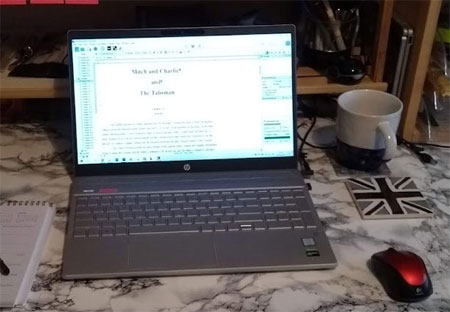
I cannot imagine what future innovations will make my current laptop obsolete, but I do know that the innovations leading up to it made my NEO obsolete. There is just no reason to take it traveling any longer, so, after sixteen years of service, I gave it to an appreciative, young student, who I hope makes good use of it.
And so, I have finally come full circle. The quest I began in my mid-teens has—some 50 years later—culminated in a device I can take anywhere and still use for everything I need to do. Something a simple notebook would accomplish for most people…
